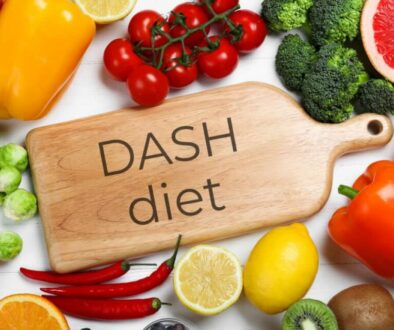Plan for Extreme Weight Loss: What to Expect
Introduction to the 14-Day DietAre you looking to kickstart your weight loss journey with a structured plan that yields rapid results? The 14-day diet plan for extreme weight loss might be just what you need. This article will walk you through what to expect when embarking on this intense but effective diet plan.
Importance of Setting Realistic Goals
When embarking on a weight loss journey, setting realistic goals is crucial for success. It’s essential to have a clear vision of what you want to achieve and to establish achievable targets that align with your capabilities and lifestyle.
Setting Achievable Targets
While it’s great to have ambitious weight loss goals, it’s equally important to set targets that are within reach. By breaking down your overall goal into smaller, manageable milestones, you can track your progress more effectively and stay motivated along the way.
For example, instead of aiming to lose 20 pounds in a month, consider setting a goal of losing 1-2 pounds per week. This approach is more realistic and sustainable, allowing you to make gradual progress without feeling overwhelmed.
Tracking Progress
Tracking your progress is essential for monitoring your success and making adjustments as needed. Whether you keep a food journal, use a fitness app, or regularly weigh and measure yourself, having tangible data to refer to can help you stay on course and celebrate your achievements.
By tracking factors such as your weight, body measurements, food intake, and exercise routine, you can pinpoint what’s working well and identify areas for improvement. This data-driven approach enables you to make informed decisions about your diet and fitness plan, leading to more consistent and efficient results.

Understanding the Basics of the 14-Day Diet Plan
The 14-Day Diet Plan is centered around a balanced macronutrient breakdown that provides the body with the essential nutrients it needs to support weight loss. By understanding the basics of this plan, including the recommended food sources and meal planning strategies, you can optimize your results and make the most of your two-week journey.
Macronutrient Breakdown
A crucial aspect of the 14-Day Diet Plan is the breakdown of macronutrients – proteins, carbohydrates, and fats – in each meal. This balanced approach ensures that your body receives the right mix of nutrients to fuel your energy levels, maintain muscle mass, and support healthy weight loss.
Proteins are essential for muscle repair and growth, while carbohydrates provide energy for your daily activities. Healthy fats play a role in hormone production and satiety. By including a variety of protein sources (such as lean meats, fish, poultry, tofu, legumes), complex carbohydrates (whole grains, fruits, vegetables), and healthy fats (avocado, nuts, seeds, olive oil), you can create well-rounded meals that keep you satisfied and energized throughout the day.
Recommended Food Sources
When following the 14-Day Diet Plan, focus on incorporating whole, nutrient-dense foods into your meals. These include lean proteins, complex carbohydrates, fruits, vegetables, and healthy fats. Avoid processed foods, sugary snacks, and high-calorie beverages that can derail your weight loss efforts and negatively impact your overall health.
By choosing quality ingredients and preparing meals from scratch, you can control portion sizes, limit added sugars and unhealthy fats, and ensure that you’re getting the essential vitamins and minerals your body needs to thrive. Experiment with different recipes and meal combinations to keep your taste buds satisfied and prevent boredom with your diet plan.
Meal Planning and Preparation
Creating a meal schedule and preparing meals in advance are key components of the 14-Day Diet Plan. By establishing a routine for when and what you’ll eat, you can avoid impulsive decisions and stick to your dietary goals more effectively. Planning ahead also saves time, money, and stress during busy weekdays.
Start by outlining your meals for each day of the week, considering your work schedule, social commitments, and exercise routine. Choose simple recipes that are easy to prepare and can be made in batches for quick grab-and-go options. Invest in meal prep containers, reusable bags, and storage solutions to keep your prepped meals fresh and organized throughout the week.
By dedicating time each week to meal planning and preparation, you set yourself up for success on the 14-Day Diet Plan. With a well-thought-out menu, a stocked pantry, and a proactive approach to cooking, you can stay on track with your weight loss goals, simplify your daily routine, and enjoy the benefits of healthy, home-cooked meals.

Incorporating Exercise into the Plan
Physical activity plays a crucial role in any weight loss plan, including the 14-Day Diet Plan. By incorporating regular exercise into your routine, you can boost your metabolism, increase calorie burn, build muscle mass, and improve overall fitness levels. Let’s explore the importance of physical activity, the types of exercises to include, as well as the benefits of staying hydrated for weight loss success.
Importance of Physical Activity
Exercise is not only beneficial for weight loss but also for overall health and well-being. When combined with a balanced diet, regular physical activity can help you achieve your weight loss goals faster, maintain muscle tone, improve cardiovascular health, reduce stress, and boost your mood.
Whether you prefer cardio workouts like running, cycling, swimming, or strength training exercises using weights or resistance bands, finding activities that you enjoy and can stick with is key. Aim for at least 150 minutes of moderate-intensity exercise per week, along with two days of strength training to maximize fat burn and muscle growth.
Types of Exercises to Include
When planning your exercise routine, it’s essential to incorporate a mix of cardiovascular, strength, and flexibility exercises to target different muscle groups and energy systems. Cardio workouts like brisk walking, jogging, or aerobic classes can help you burn calories and improve your endurance.
Strength training exercises such as weight lifting, bodyweight exercises, or resistance band workouts are essential for building lean muscle mass, increasing metabolism, and shaping your physique. Include compound movements like squats, lunges, push-ups, and rows to work multiple muscle groups simultaneously.
Incorporating flexibility exercises like yoga, Pilates, or stretching routines can improve your range of motion, and posture, and reduce the risk of injuries. Focus on stretching major muscle groups after your workouts or on rest days to promote recovery and relaxation.
Hydration and Its Role in Weight Loss
Staying hydrated is essential for weight loss success and overall health. Water plays a vital role in regulating body temperature, digestion, nutrient absorption, and metabolism. When you’re well-hydrated, you may experience improved energy levels, reduced hunger cravings, and enhanced physical performance during workouts.
Benefits of Staying Hydrated
Drinking an adequate amount of water throughout the day can help prevent dehydration, which can lead to fatigue, headaches, and poor concentration. Hydration also supports healthy digestion, kidney function, and detoxification processes in the body, allowing you to eliminate waste products and toxins efficiently.
Recommended Water Intake
While individual water needs vary based on factors such as age, weight, activity level, and climate, a general guideline is to drink at least eight 8-ounce glasses of water per day (about 2 liters). However, some people may require more water, especially if they engage in intense exercise, live in hot climates, or have specific health conditions.
By sipping water throughout the day, including before and after meals, and staying attuned to your body’s thirst cues, you can ensure adequate hydration and support your weight loss efforts on the 14-Day Diet Plan.

Avoiding Common Diet Plan Mistakes
When following a structured diet plan, it’s essential to avoid common pitfalls that can hinder your progress and lead to disappointment. Over-restricting calories and falling for fad diets are two of the most prevalent mistakes that can sabotage your weight loss journey.
Over-Restricting Calories
While creating a calorie deficit is necessary for weight loss, severely restricting your daily caloric intake can backfire and slow down your metabolism. Your body may go into starvation mode, holding on to fat stores and burning muscle mass for energy, which can lead to long-term weight gain.
Instead of drastically cutting calories, focus on eating nutrient-dense, whole foods that keep you satiated and energized. Listen to your body’s hunger and fullness cues, and aim for a moderate calorie deficit of 500-750 calories per day for steady weight loss progress.
Opting for Fad Diets
Fad diets promise quick fixes and dramatic results, but they’re often unsustainable, impractical, and lacking essential nutrients for long-term health. Diets that eliminate entire food groups, rely on expensive supplements, or promote extreme eating habits are not suitable for lasting weight loss success.
Instead of jumping from one trendy diet to another, focus on building healthy eating habits, portion control, and balanced nutrition. Choose a diet plan that aligns with your preferences, lifestyle, and dietary needs, and seek guidance from a registered dietitian or nutritionist for personalized recommendations.
Handling Cravings and Temptations
Cravings and temptations can derail your weight loss efforts, but with the right strategies, you can overcome them and stay on track with your 14-Day Diet Plan.
Strategies for Overcoming Cravings:
- Identify triggers: Pay attention to what triggers your cravings, whether it’s stress, boredom, or social situations. By recognizing these cues, you can find healthier ways to cope.
- Distract yourself: Engage in a different activity when cravings strike, such as going for a walk, calling a friend, or practicing deep breathing exercises.
- Opt for healthier alternatives: Substitute high-calorie, processed snacks with nutritious options like fruits, nuts, Greek yogurt, or veggie sticks with hummus.
- Practice mindful eating: Slow down and savor your meals, paying attention to hunger and fullness cues. Avoid multitasking while eating to prevent mindless snacking.
Healthy Alternatives to Junk Food:
- Air-popped popcorn instead of buttered popcorn
- Dark chocolate squares instead of candy bars
- Homemade vegetable chips instead of potato chips
- Greek yogurt with fruit instead of sugary yogurt
- Nut butter on whole-grain toast instead of sugary pastries
Monitoring Progress and Making Adjustments
Importance of Tracking Weight and Measurements: Tracking your weight and measurements is essential for monitoring progress, identifying trends, and making adjustments to your diet and exercise plan. By logging this data regularly, you can track changes in body composition, muscle mass, and fat loss over time.
Making Changes Based on Results: If you notice a plateau or slow progress, revisiting your food diary, exercise routine, and hydration levels can help you pinpoint areas for improvement. Consider adjusting your calorie intake, increasing the intensity or duration of workouts, or incorporating more variety into your meals to break through a plateau.
Dealing with Plateaus and Setbacks
Understanding Weight Loss Plateaus: Weight loss plateaus are common and often occur when your body adapts to a new diet or exercise routine, causing a temporary halt in progress. Factors like metabolic rate, hormonal changes, stress, and lack of sleep can contribute to plateaus.
Strategies for Overcoming Setbacks:
- Shake up your routine: Try new workouts, change meal timings, or vary your calorie intake to kickstart your metabolism.
- Focus on non-scale victories: Celebrate improvements in energy levels, strength, endurance, and mood rather than solely relying on the scale.
- Stay positive and persistent: Remember that setbacks are a natural part of the weight loss journey. Stay motivated, stay consistent, and trust the process.
By implementing these strategies for handling cravings, monitoring progress, and overcoming setbacks, you can stay focused, resilient, and committed to your 14-Day Diet Plan. Remember that sustainable weight loss takes time, patience, and dedication, so stay flexible, adaptable, and open to making adjustments along the way.

Potential Risks and Considerations
While the 14-Day Diet Plan can be a valuable tool for jumpstarting weight loss and improving overall health, there are potential risks and considerations to keep in mind. It’s essential to approach any diet and exercise program with caution and consult with a healthcare provider before making significant changes to your eating habits or activity levels.
Consulting with a Healthcare Provider: Before starting the 14-day diet plan or any new weight loss regimen, it’s advisable to consult with a healthcare provider, such as a doctor, registered dietitian, or nutritionist. They can help assess your current health status, review any medical conditions or medications that may impact your dietary choices, and provide personalized recommendations tailored to your individual needs.
Addressing Any Underlying Health Issues: If you have underlying health issues such as diabetes, heart disease, high blood pressure, or food allergies, it’s crucial to address these concerns before embarking on a restrictive diet plan. Your healthcare provider can offer guidance on how to modify the 14-Day Diet Plan to accommodate your specific health needs and ensure safe and sustainable weight loss.
Conclusion: 14-Day Diet Plan for Extreme Weight Loss
In conclusion, the 14-Day Diet Plan can be a valuable tool for promoting weight loss, improving nutrition, and cultivating healthy habits. By understanding the basics of the plan, incorporating exercise, handling cravings, and monitoring progress, you can set yourself up for success on your weight loss journey.
However, it’s important to approach any diet and exercise program with caution, consult with a healthcare provider, and address any underlying health issues to ensure your safety and well-being. Sustainable weight loss is a gradual process that requires patience, consistency, and personalized guidance, so be kind to yourself, listen to your body, and make choices that support your long-term health and wellness goals.
Also Read:
The Ultimate Guide to Glowing Skin: Tips and Tricks



